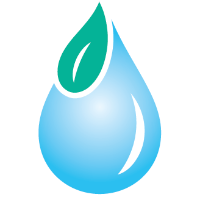Daugherty Water for Food Global Institute
Date of this Version
8-3-2019
Document Type
Article
Citation
2019 The Authors.
Abstract
Global demand for livestock products is rising, resulting in a growing demand for feed and potentially burdening freshwater resources to produce this feed. To offset this increased pressure on water resources, the environmental performance of livestock sector should continue to improve. Over the last few decades, product output per animal and feedstuff yields in the US have improved, but before now it was unclear to what extent these improvements influenced the water productivity (WP) of the livestock products. In this research, we estimate changes in WP of animal products from 1960 to 2016. We consider feed conversion ratios (dry matter intake per head divided by product output per head), feed composition per animal category, and estimated the water footprint of livestock production following the Water Footprint Network's Water Footprint Assessment methodology. The current WP of all livestock products appears to be much better than in 1960. The observed improvements in WPs are due to a number of factors, including increases in livestock productivity, feed conversion ratios and feed crop yields, the latter one reducing the water footprint of feed inputs. Monogastric animals (poultry and swine) have a high feed-use efficiency compared to ruminants (cattle), but ruminants consume relatively large portion of feed that is non-edible for humans. Per unit of energy content, milk has the largest WP followed by chicken and pork. Per gram of protein, poultry products (chicken meat, egg and turkey meat) have the largest WP, followed by cattle milk and pork. Beef has the smallest WP. These data provide important information that may aid the development of strategies to improve WP of the livestock sector.
Included in
Environmental Health and Protection Commons, Environmental Monitoring Commons, Hydraulic Engineering Commons, Hydrology Commons, Natural Resource Economics Commons, Natural Resources and Conservation Commons, Natural Resources Management and Policy Commons, Sustainability Commons, Water Resource Management Commons


Comments
M.M. Mekonnen, et al. Environment International 132 (2019) 105084